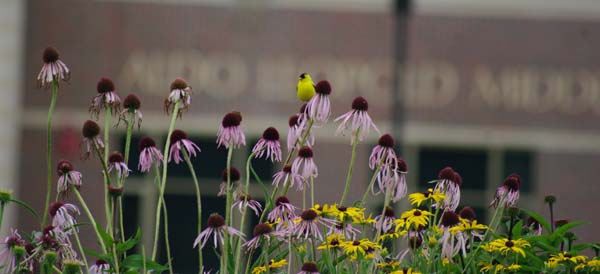
Leopold School Outdoor Prairie Classroom
Native Prairie History
Iowa prairie soil is rich and fertile but the plant and animal community which created the prairie has mostly been lost to food production. Industry and towns that have gown up around the subtle rolling landscape further consumed the savannah and woodlands. Dragonflies and oak groves, butterflies and grassland birds are all in decline due to habitat loss. Losing 98% of the Iowa prairie means we have fewer wild places to grow our imaginations in the way our ancestors enjoyed.
However, the change is deeper than landscape aesthetics. 20,000 years of perennial prairie roots growing deep into the glacial soils created air spaces 16 feet down. The spongy soil absorbed rain water, so that there was almost no run-off, even on hills; therefore, little erosion and fewer floods.
We could go on about the problems of shallow rooted annual plants, erosion, nutrient run-off and compaction or paving. But recovery is possible, by reconstructing the prairie soil biotic community that endured so long.
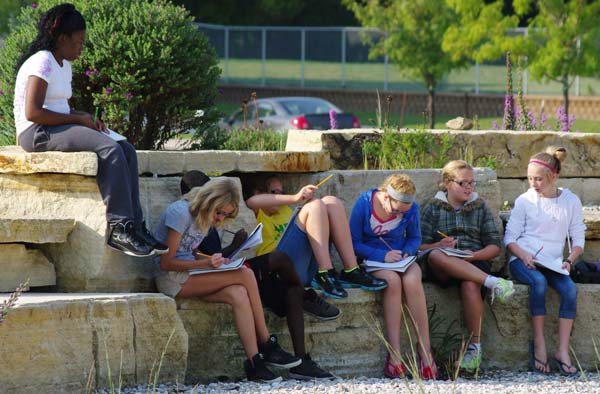 A future lepidopterist alighted on a rock, with a future entomologist, geologist, ornithologist, botanist, paleontologist and a sociologist recording the day's discoveries.
A future lepidopterist alighted on a rock, with a future entomologist, geologist, ornithologist, botanist, paleontologist and a sociologist recording the day's discoveries.
School Grounds
The new Aldo Leopo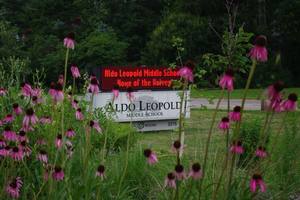 ld Middle School had some flat, bare ground in front of the building and it seemed that it would be the perfect place for a Leopold oriented conservation project to help students learn more about the namesake of their school. The vast majority of Midwestern prairie vanished as our culture has grown more affluent. Leopold began the first prairie restoration in the country at the University of Wisconsin Arboretum in 1935 and at about the same time started experimenting with prairie restoration at the family's weekend retreat, lovingly referred to as "The Shack". Since Leopold played such a leading role in prairie restoration and the idea of recovering the natural landscape, this seemed a fitting theme for the Leopold school grounds. The Leopold Heritage Group www.leopoldheritage.org (the group the Alliance branched out from) worked closely with school officials and maintenance to assure that the prairie would not cause any complications for school functions. The project was funded entirely with grants, donations, and volunteers. (For more information on the benefits and use of the prairie, see Childhood.)
ld Middle School had some flat, bare ground in front of the building and it seemed that it would be the perfect place for a Leopold oriented conservation project to help students learn more about the namesake of their school. The vast majority of Midwestern prairie vanished as our culture has grown more affluent. Leopold began the first prairie restoration in the country at the University of Wisconsin Arboretum in 1935 and at about the same time started experimenting with prairie restoration at the family's weekend retreat, lovingly referred to as "The Shack". Since Leopold played such a leading role in prairie restoration and the idea of recovering the natural landscape, this seemed a fitting theme for the Leopold school grounds. The Leopold Heritage Group www.leopoldheritage.org (the group the Alliance branched out from) worked closely with school officials and maintenance to assure that the prairie would not cause any complications for school functions. The project was funded entirely with grants, donations, and volunteers. (For more information on the benefits and use of the prairie, see Childhood.)
Opportunities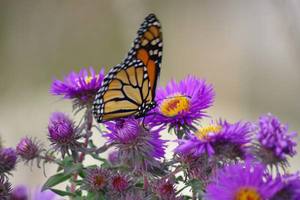 in the Prairie
in the Prairie
The demonstration prairie is a chance to reconnect our youth with thousands of years of upland prairie natural history that is not so easily seen near the school. The prairie includes several types of soil composition to increase the plant and animal diversity, and to favor certain ecological relationships that Aldo wrote about. Clay, sand, gravel and limestone were used in the berms, so we can learn more about Aldo's favorite plants and animals on this site.
For quicker success we used a combination of plugs and seeds of both grasses and forbs. The mixture of grass and forbs is approximately 50% so that the grasses provide a matrix of root systems to help prevent invasive weeds from coming in and to act as companion plants to certain forbs. After only three years, the prairie plant bio-diversity has reached 90 species. In addition, we have about 20 species of oak woodland and savannah trees. The transformation has been stunning in terms of flower color and texture. In a short period of time there has been an explosion of interesting and colorful wildlife. Where there were only house sparrows, starlings and robins, there are now over 30 species of birds visiting regularly. It took only one year for a huge increase in butterflies and now about 40 species have been photographed and identified. Dragonflies, damselflies, bees, wasps, moths and beetles can sometimes be trickier to identify, but we have well over 50 additional species of insects and pollinators.
Studying pollinators is crucial to understanding man's impact on small aspects of our environment that can threaten the whole biotic community, including humans. Many famous conservationists developed their insights and abilities to perceive large scale patterns by starting out studying small creatures and the plants they rely on.
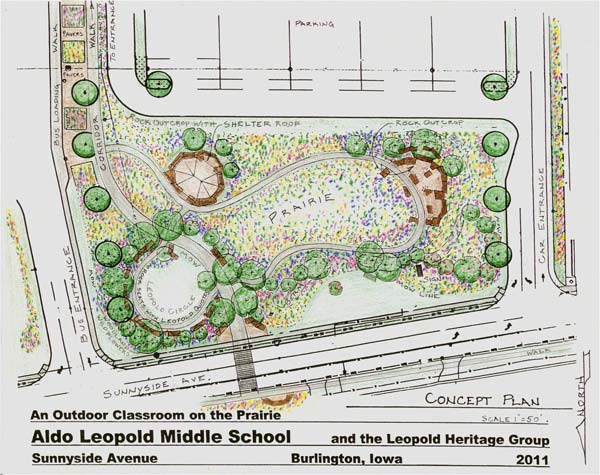
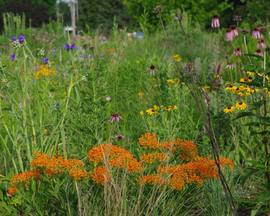

Getting Up Close to the Small Scale in the Prairie
Leopold was famous for focusing in on small scale species and their values, both for their aesthetic qualities and the ecological relationship. Some examples that come to mind are Aldo's description of draba or the connection between the lowly bog birch and rare lady slippers. Leopold frequently praised amateur naturalists who focus their interests on studying individual species or phenology (the study of periodic natural events and their relation to climate and changes in season). Keeping lists and paying attention to the timing of plant and animal details or events is a form of collecting that is so important in starting the process of increasing one's perception. Today we refer to informed, tuned in amateur birders, lepidopterists, and "bugologists" as "Citizen Scientists" - folks dedicated to studying and inventorying local species as a way to guide conservation projects.
As Leopold said in "Marshland Elegy", Our ability to perceive quality in nature begins, as in art, with the pretty. It expands through successive stages of the beautiful to values as yet uncaptured by language.
Another famous ecologist, Edward O Wilson, has commented that our first study of nature usually involves identification. He comments that this is a sufficient reward in its self - a thrill just to see a species in its brilliance. The next step of the perception process is the study of a species' ecology--its habitat, food, migration or inter-relationships. The last step focuses on behavior--the most intricate and revealing part of an animal's natural history. "If you know an animal's behavior well, you know its essence."
With this wisdom from Leopold and Wilson, we hope our friends and students will use the photos and lists of species as aids in sorting out the diversity at the prairie. Below is a list of butterflies identified, so far, at the school classroom to serve as a checklist, and with spaces for notes on behavior. Some activities to look for include territorial patrolling, basking, courting, mating, nectaring, or drinking & mineral searching. Also look for variations in patterns, worn wings and damaged wings from predation attempts.
As amateurs we may have made errors in identifying some of the species, especially on the tricky skippers. We have identified most of these from photographs to stop the action and blow up the details for identifying purposes. Please let us know if you see any mistakes. And also let us know if you spot some new butterflies.
In addition to the butterfly list, we also have an updated plant list for the prairie which includes information on the bloom color and preferred sites on the prairie in regard to rock, sand, dryness, etc. Marked on the list are many of the plants referred to in Leopold's writings, including some of particular interest to Aldo. We hope to also have lists of birds and other insects in the near future. Please feel free to contact the Leopold Landscape Alliance or the Leopold Heritage Group if you would like a copy of the plant list.
Butterflies on the School Prairie

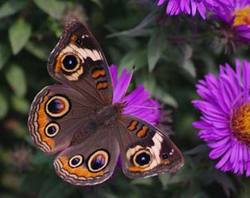 Checkered White Buckeye
Checkered White Buckeye
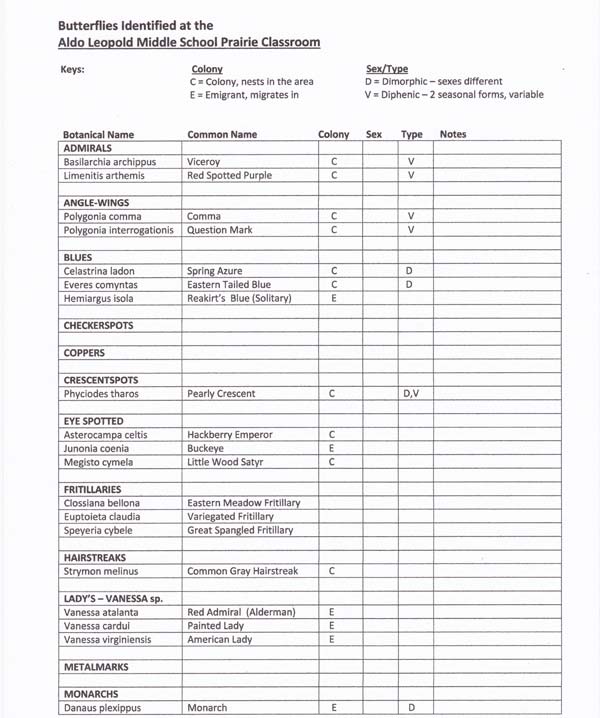
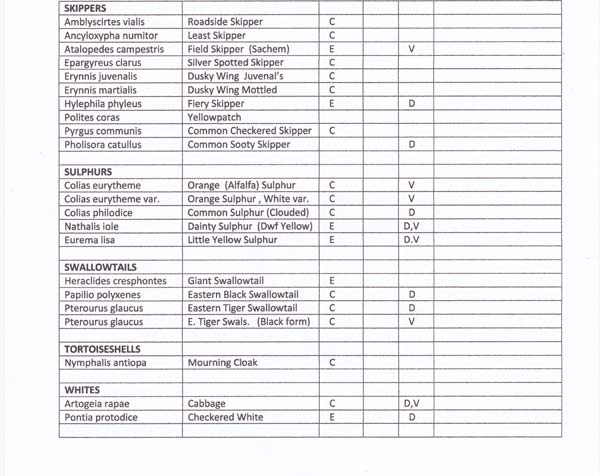
Look for more insects coming in the future!
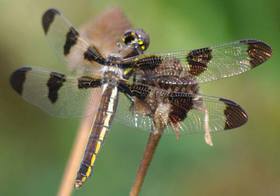
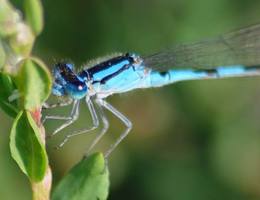
Twelve Spotted Skimmer Dragonfly Bluet Damselfly
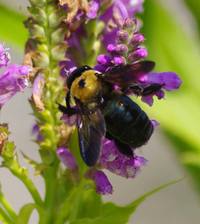
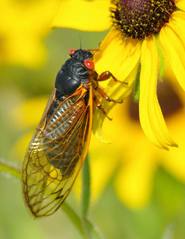
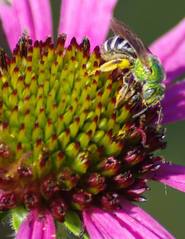 Carpenter Bee 17 Year Cicada Metallic Green Sweat Bee
Carpenter Bee 17 Year Cicada Metallic Green Sweat Bee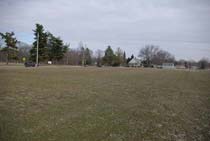 2011 Site of the future prairie
2011 Site of the future prairie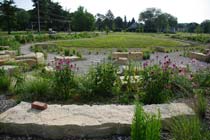 2013
2013 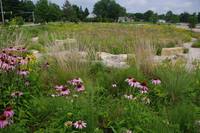 2015
2015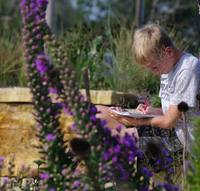 A future ecologist at work in the prairie
A future ecologist at work in the prairie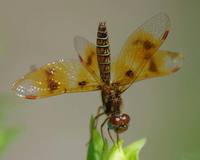 Eastern Amberwing
Eastern Amberwing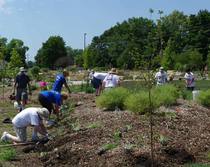 Dirty Hands Group, First Presbyterian Church, planting plugs second year.
Dirty Hands Group, First Presbyterian Church, planting plugs second year.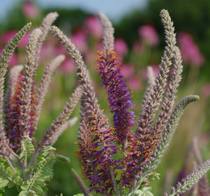 Leadplant Amorpha
Leadplant Amorpha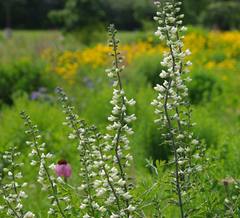 Wild White Indigo
Wild White Indigo
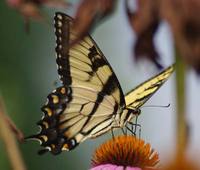 Tiger Swallowtail
Tiger Swallowtail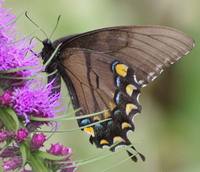 Tiger Swallowtail, black form female
Tiger Swallowtail, black form female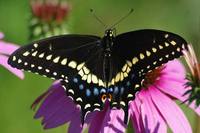 Black Swallowtail
Black Swallowtail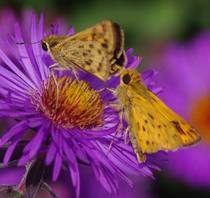 Fiery Skippers courting
Fiery Skippers courting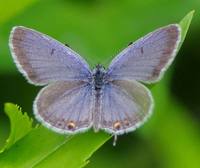 Eastern Tailed Blue
Eastern Tailed Blue Painted Lady
Painted Lady American Lady
American Lady Great Spangled Frittilary
Great Spangled Frittilary 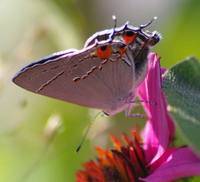 Common Gray Hairstreak
Common Gray Hairstreak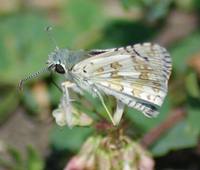 Common Checkered Skipper, white form
Common Checkered Skipper, white form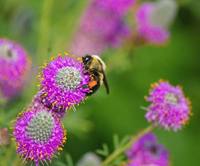 Bumble bee on purple prairie clover
Bumble bee on purple prairie clover